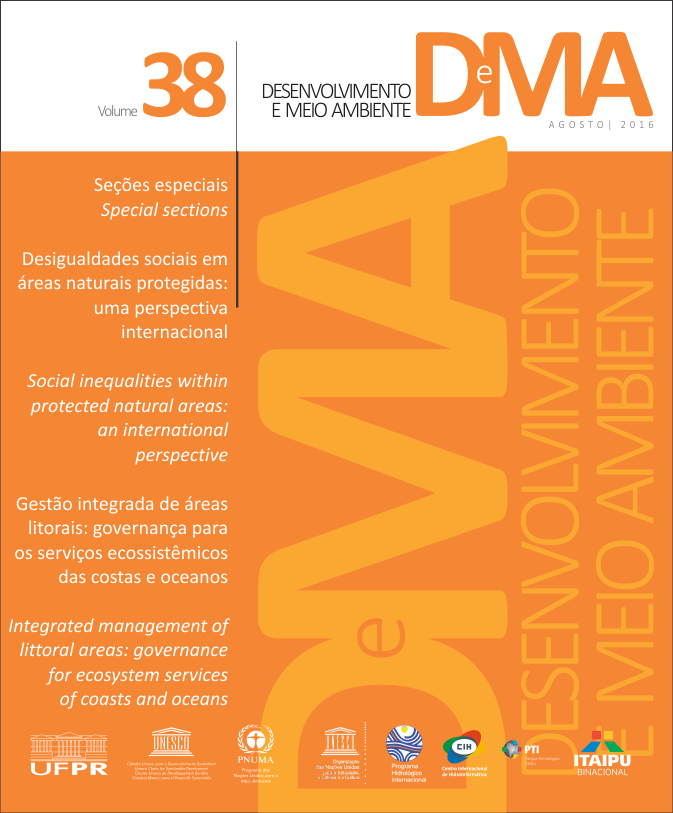Conceptual Model of Threat Assessment of Ecosystem Services on the dunes system. Case study: The Dune Fields of Santa Catarina Island/SC, Brazil
DOI:
https://doi.org/10.5380/dma.v38i0.46992Keywords:
ecosystem services, human wellbeing, dunes, ecosystem-based managementAbstract
This article aims to develop a conceptual framework for the identification of dunes ecosystem services (ES), it´s main pressure sources, the beneficiaries of those services and management responses based on the use of a framework developed by the Integrated Coastal Management Laboratory of UFSC. It refers to a case study on three protected areas with dunes systems located on Santa Catarina Island, Brazil. The methodologies used were Ecosystem Based Management and Knowledge, developed by the Integrated Costal Management Lab/UFSC as a tool for services identification and classification, and Threats Classification Scheme, from the IUCN, for the identification and evaluation of dune system threats degrees. Santa Catarina Island has 18 environmental systems supplying around 50 environmental and social needs. For dunes systems, nine prevailing services were identified, classified as: habitat support; freshwater and mineral resources supply; aquifer regulation and recharge; sediment flow; erosion control; nutrients cycling and filtering; and cultural, related to the landscape. The main beneficiaries and the actors most affected by the use and diminishing offer and quality of those ES are local communities and the whole touristic sector. As for the threats upon the dunes, 18 pressure vectors were highlighted. The classified as “very high” were: subterranean water catchment and sewage discharge. Classified as “high” are touristic and recreational activities, housing and commercial infrastructure, and roads/pathways.n the face of these results, the challenge is to develop public policies to encourage knowledge gathering on
the coastal zone ES as they are central to reaching an effective management of its natural resources. The use
of EBM enables the identification of pressure vectors, framing a technical and scientific information base as a
way to subsidize decision making and popular knowledge aimed at diminishing impacts on ecosystem services
and processes while maintaining human wellbeing for present and future generations.
Downloads
Published
How to Cite
Issue
Section
License
Copyright on works published in this journal rests with the author, with first publication rights for the journal. The content of published works is the sole responsibility of the authors. DMA is an open access journal and has adopted the Creative Commons Attribution 4.0 Not Adapted (CC-BY) license since January 2023. Therefore, when published by this journal, articles are free to share (copy and redistribute the material in any medium or format for any purpose, even commercial) and adapt (remix, transform, and create from the material for any purpose, even commercial). You must give appropriate credit, provide a link to the license and indicate if changes have been made.
The contents published by DMA from v. 53, 2020 to v. 60, 2022 are protected by the Creative Commons Attribution-NonCommercial-NoDerivatives 4.0 International license.
DMA has been an open access journal since its creation, however, from v.1 of 2000 to v. 52 of 2019, the journal did not adopt a Creative Commons license and therefore the type of license is not indicated on the first page of the articles.




